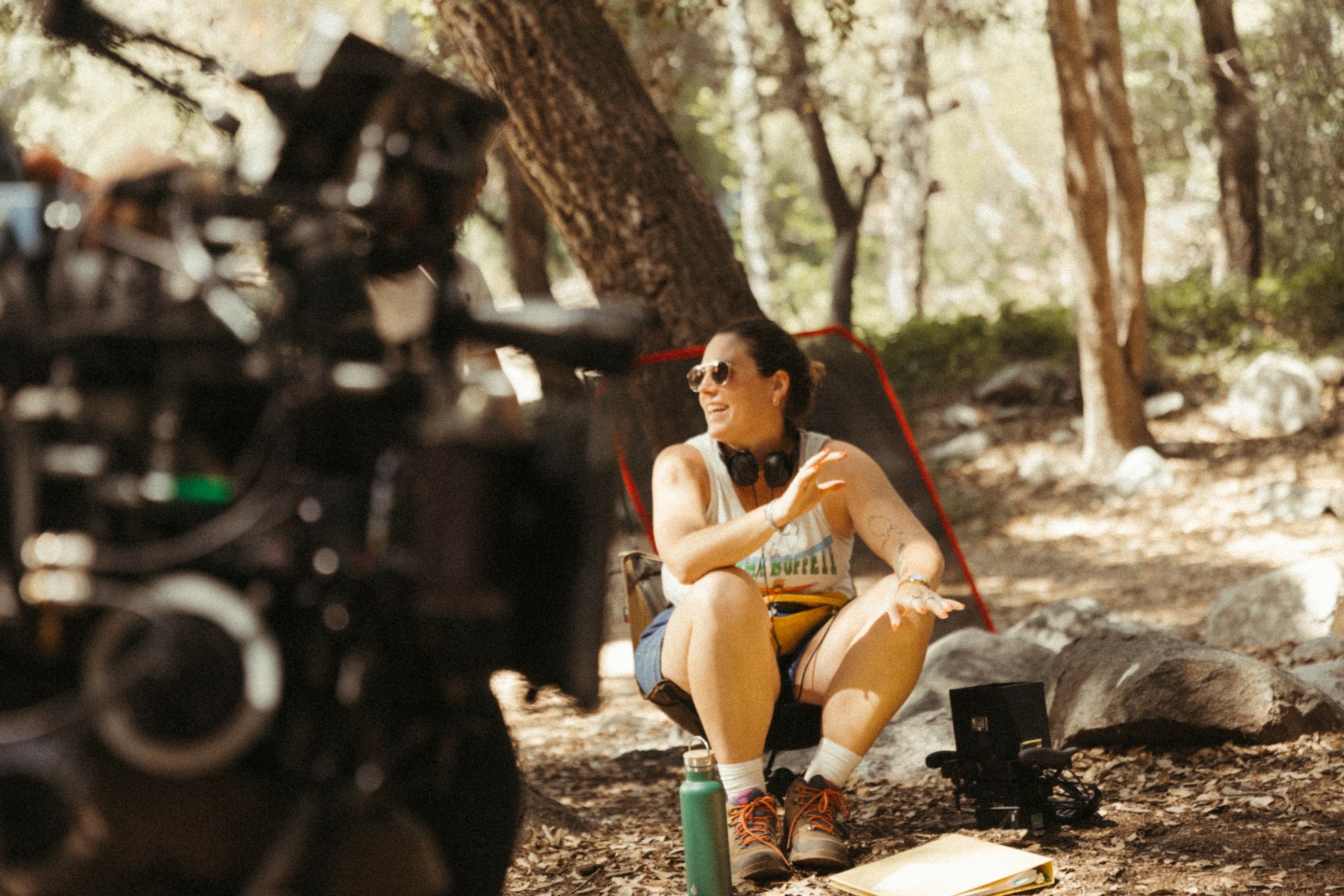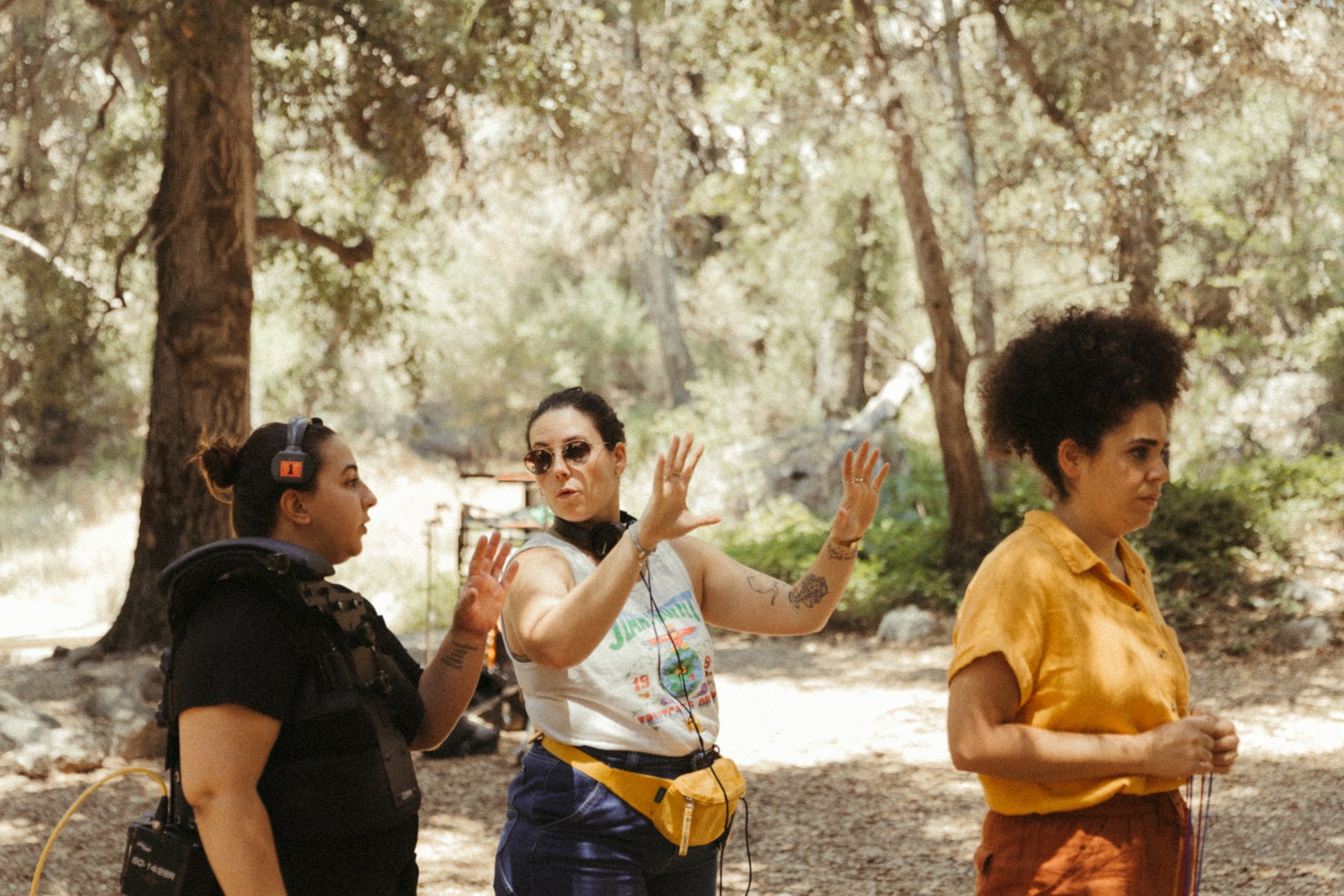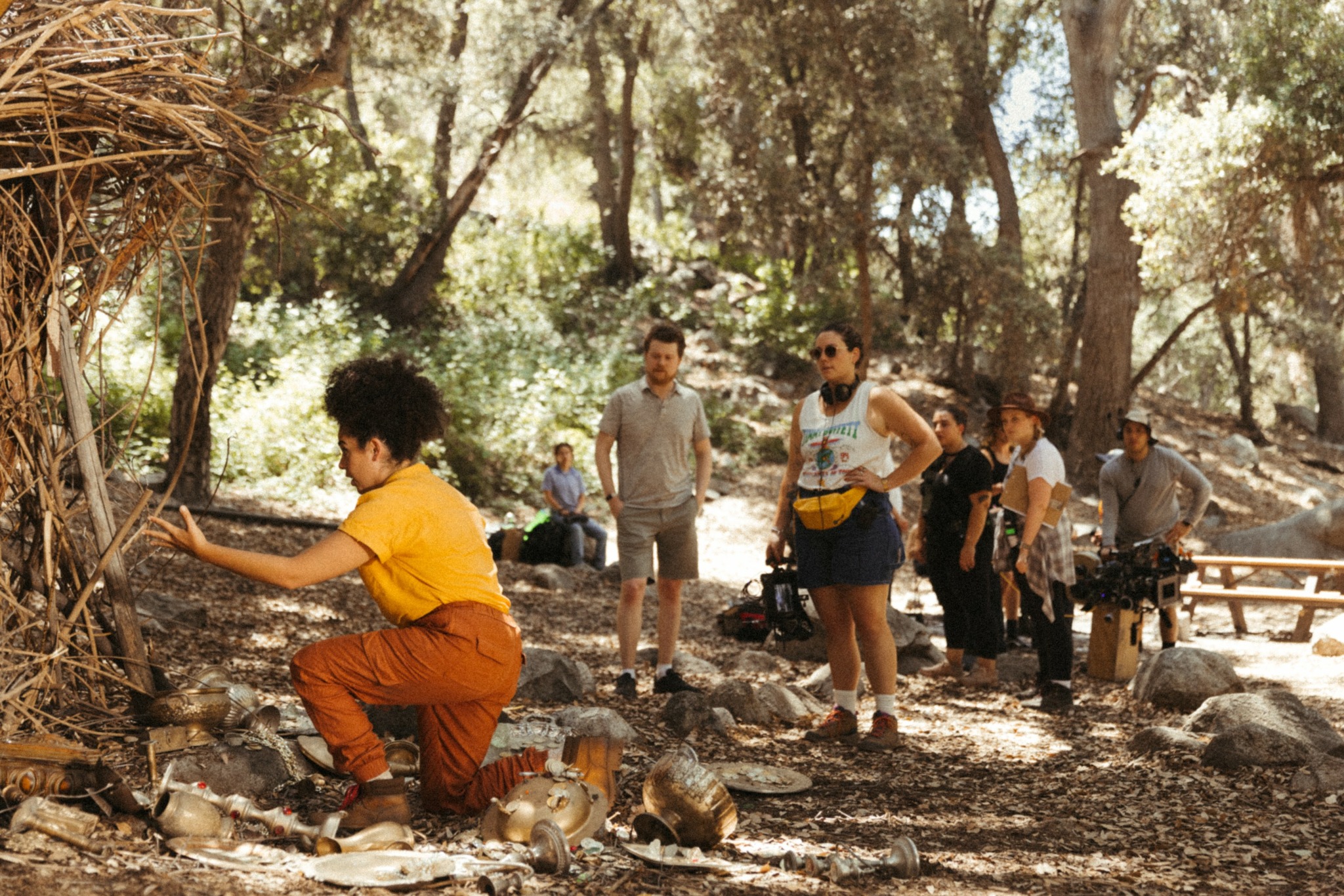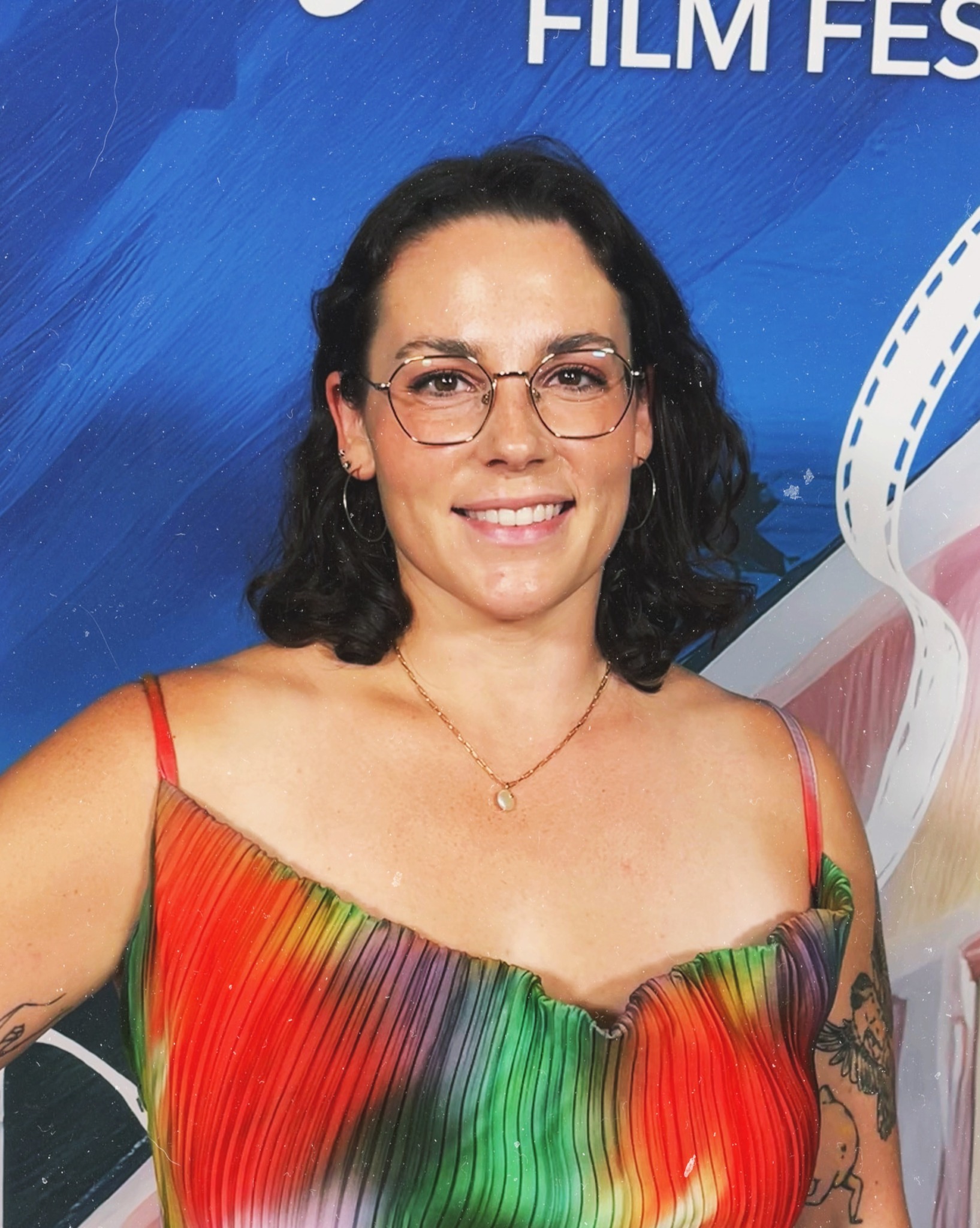We caught up with the brilliant and insightful Taylor Bakken a few weeks ago and have shared our conversation below.
Taylor, looking forward to hearing all of your stories today. Did you always know you wanted to pursue a creative or artistic career? When did you first know?
I learned pretty quickly after moving to LA from Minnesota in 2015 that this city runs on what I call the “24-Hour Rule.” One day you’re working yourself to the bone for something, and the next day you wake up to an email or a phone call, and suddenly it’s all fallen into your lap. Becoming a filmmaker wasn’t something I’d ever imagined for myself– but, true to form, it happened over essentially a 24-hour period.
Film had never really been on my radar growing up. Music was always my north star. Still, I had a blockbuster-fueled education in high school, and in college I took a course on German cinema that threw me into the deep end of international film. From there, I devoured anything that felt “weird.” I got obsessed with Lynch, Ruiz, Varda– then dove into the true surrealists, started painting, and got completely immersed in that world.
Then one weekend in 2017, everything shifted. A friend had just started acting, another had a camera, and we decided to spend a couple of days shooting strange images around LA– the Velaslavasay Panorama, a castle spire on a beach in Laguna, all these little oddities. I edited the footage, wrote a piece of music for the score, and when I watched it all together, it was like my brain short-circuited in the best way. I’d caught the bug. That weekend sparked a whole series of surrealistic portraits and set me on this path.
At the time, I was working at a development company, and I ended up using their internship program to essentially create my own mini production company. I went from calling myself an “experimental filmmaker” to (nervously) a “female filmmaker,” and eventually, just a filmmaker — no qualifier needed. We shot my short film The Origin Story (of Gerald the Lemon) over three years, across countless camping trips, through the 108-degree heat of Joshua Tree and the snow flurries of Alabama Hills. I always joke that I didn’t go to film school, I went to the desert.
That weekend back in 2017 was the turning point. It showed me the joy of merging image, movement, and sound, and I’ve been chasing that feeling ever since. I knew I wanted to tell strange stories in the most visually compelling way possible.
Great, appreciate you sharing that with us. Before we ask you to share more of your insights, can you take a moment to introduce yourself and how you got to where you are today to our readers.
I moved to LA from Minnesota without knowing a single soul in the film industry, and somehow wound up working with major players, a trajectory I never could have dreamed of. I think it helped that I came out here with a few years of experience under my belt from working in the live music scene in Minneapolis. Once I arrived, I started temping through industry placement companies and landed at CAA in the music department while trying to figure out what I wanted to do in film. Not long after, I found myself at Team Downey, working for one of the principals as a development assistant.
Team Downey was where I really learned the ropes. I read every single script that came in and soaked up as much as I possibly could. I was completely obsessed– if I wasn’t reading, I was at the New Beverly or the Cinefamily (RIP), watching everything I could. After Team Downey, I joined Wicious Pictures, where I now run development in addition to writing and directing my own projects.
Looking back on the past decade, what I’m most proud of is how stubbornly I’ve held onto my own voice. Every rabbit hole I’ve gone down has been led by curiosity and delight, never by trend or imitation. That instinctive approach has shaped a visual and storytelling language that feels uniquely my own. I go where my mind is pulled: a lemon with legs, a man with an apple for a head, a woman who flies with birds, a man with mushrooms growing from his back. These aren’t premeditated ideas; they hit me like lightning, and I have to chase them to see where they lead.
The stories I’m drawn to tell are always slightly left of center, something that feels familiar yet off, but always anchored by an emotional, human core. I’ve studied surrealism for over a decade now, and while I’ll always be a student, I’ve tried to infuse those lessons into my work: using symbolism as a playful and meaningful layer on top of grounded storytelling. Filmmakers like George Miller, Jeunet & Caro, and Alice Rohrwacher are huge inspirations for me. I want to carry that torch: bringing surrealism to a commercial level where it doesn’t alienate, but intrigues and excites.
My most recent short film, What’s the Deal with Birds?, played to great success on the festival circuit. It follows an ornithologist (played by Kimia Behpoornia) who feels that science hasn’t answered that question, and goes on a Herzogian journey into the woods, where she meets a bird who speaks to her (voiced by Chris Pine).
Next up is The Mushroom Man, a surreal tone poem about a man who grows mushrooms on his back. We’re currently in prep and financing, planning to shoot in early 2026. It’s my Mad Max, strange, ambitious, and deeply human, and I’m absolutely thrilled to tell this story.
Have you ever had to pivot?
Following an impulse to pivot can be scary, or feel hasty, but every major move I’ve made in my life has ultimately been for the best.
Music was my first love. I started playing piano at five, and in college, I joined a band that gained some real popularity in Minneapolis. I hardly ever talk about that time in my life because it felt like one day I just woke up and it was over. I made a hard pivot into classical music. That transition eventually led me into film scoring, and ultimately, into my career in Los Angeles. So I have zero regrets– but when I look back, I do wonder if fear played a role in that shift.
A few years later, I pivoted again, this time into filmmaking. I’d been producing for a while, but something about it felt lackluster, like the energy wasn’t flowing. Meanwhile, I had all these images in my head that needed to find a way out. Filmmaking was terrifying at first; I was shy, still learning the sound of my own voice. But once I started, I realized I’d never felt more myself than when I was directing or editing or scoring a film.
Pivoting has become a kind of creative philosophy for me. I think about it all the time; even now, as I’ve started writing my first novel, which feels like another major shift, teaching my brain to unlearn the rhythms of screenwriting. But that’s the beauty of it: every pivot brings me closer to the artist I’m meant to be.
Is there a particular goal or mission driving your creative journey?
My goal as a filmmaker is to create work that feels truly singular. I love world-building and a general sense of weirdness (though to be clear, not horror) and I want to bring that love of the surreal into a more commercial space. I’m interested in making surrealism accessible: stories that use strange or dreamlike imagery not to confuse or distance people, but to draw them closer, to make them feel something unexpected and deeply human.
I believe movies shouldn’t alienate an audience; they should invite them in for a wild, imaginative ride that leaves them thinking or feeling something new by the end.
Staying connected to my Midwestern roots really fuels that mission. I want everything I make to feel universal, not just for the bi-coastal creative crowd, but for anyone who loves stories that blend the strange with the familiar, the surreal with the sincere.
Contact Info:
- Website: www.taylorbakken.com
- Instagram: @taylorbakken
- Other: https://www.tiktok.com/@taylorbakkenfilm





Image Credits
Amanda Sayeg (amor.afilms)


